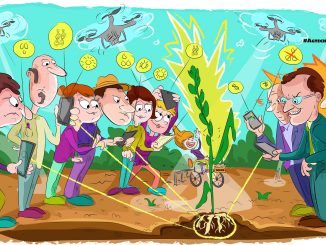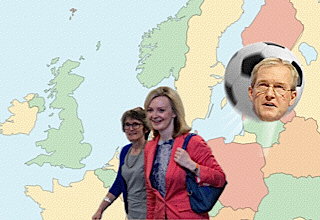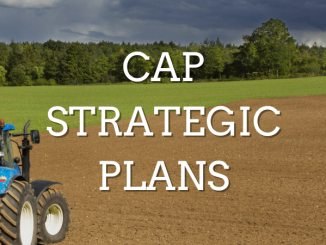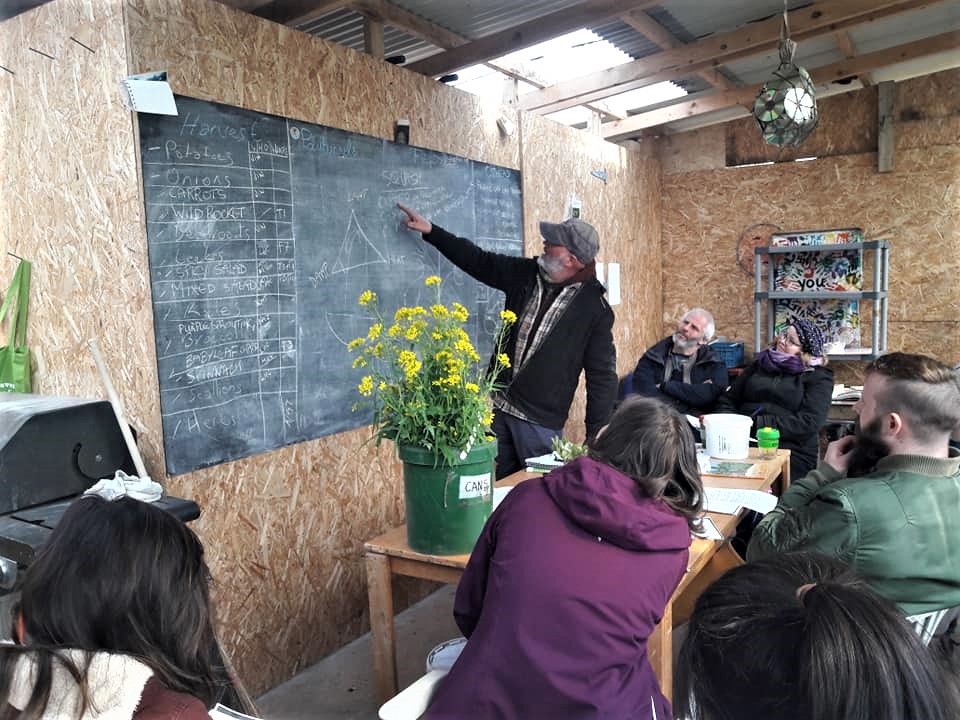
In part one, we outlined just how bad the situation is regarding climate and biodiversity collapse, as well as the people-driven responses to this – from extinction rebellion to the school strikes. Beyond these alarm-raising direct action initiatives, what is there out there to become the system change that’s so clearly needed? Here in part 2 we introduce the social and solidarity economy, and the interesting lessons we can learn from separatist movements from the past and present, from Quebec to Ireland.
Anti-Capitalist? How about Pro Solidarity Economy?
Many argue that capitalism is fundamentally incompatible with the scale of change required. This may well be the case. However, building the social and solidarity economy (SSE), rather than blankly being anti-capitalist is, it is suggested here, a more useful way forward. At the very least, you get practice in how to do things differently; more optimistically, you build an alternative, fairer and more interconnected economy, one that could start to suck the marrow from the bones of our current neoliberal economy.
SSEs exist in numerous spheres, which are worth unpacking in some more detail – both for assessing their scale and for understanding their potential.
Organisations like RIPESS have been promoting the SSE for years – it waxes and wanes, ebbs and flows, but, undeniably, it is the main realworld alternative to our current economic model, now that the added climate and biodiversity breakdown elements are added: it is emerging as THE thing that puts organisational and intellectual heft behind the movement to build an economy as if people and planet mattered.
RIPESS definition of the social and solidarity economy:
“The Social Solidarity Economy is an alternative to capitalism and other authoritarian, state- dominated economic systems. In SSE ordinary people play an active role in shaping all of the dimensions of human life: economic, social, cultural, political, and environmental. SSE exists in all sectors of the economy production, finance, distribution, exchange, consumption and governance. It also aims to transform the social and economic system that includes public, private and third sectors. SSE is not only about the poor, but strives to overcome inequalities, which includes all classes of society. SSE has the ability to take the best practices that exist in our present system (such as efficiency, use of technology and knowledge) and transform them to serve the welfare of the community based on different values and goals.
(…) SSE seeks systemic transformation that goes beyond superficial change in which the root oppressive structures and fundamental issues remain intact.”
Solidarity Economy Farming and Food
In food, Community Supported Agriculture is the most comprehensive SSE model, though the Italian GAS, French AMAP, and also two models from Japan – Teikei and the lesser known Seikatsu are arguably operating on a larger scale and are more impactful than the CSA movement at present. CSA involves farmers and eaters sharing the risks, responsibilities and rewards of production: eaters promise cash up front for a long period of time and get both a guaranteed supply and a say in what’s produced, and how it is produced. Typically, its food produced in an agroecological manner that’s sought out by CSA adherents. Externalities – pollutions and costs borne by society and the environment – are more internalised, via closed nutrient loops, mixed farming and other techniques from the organic handbook. In other words its like a self-taxing system for the good of the living world.
Similarly, Landcare, Access to Land initiatives (like Terre de Liens), tech sovereignty farmer-to-farmer movements like Farm Hack, Láterier Paysan, and iterations of farm hack utilising digital Peer to Peer (P2P) and (neo) Commons movements and show that there is lots of potential in multi stakeholder initiatives sharing responsibility and resources – including EIPs (European Innovation Partnerships) utilising the more progressive aspects of the CAP (Common Agricultural Policy) show how we can collectively manage regions and what’s produced in them.
Rural Dialogues | Landcare Germany – Bringing Farmers, Conservationists & Policymakers Together
AgtechTakeback – Technical Sovereignty and L’Atelier Paysan’s Tooled up French Farmers
Democratising AgTech? Agriculture and the Digital Commons | Part 1
Terre de Liens: Experiencing and Managing Farmland as Commons
Solidarity Economy Beyond Agri-Food
The focus here is on food and farming, but it is nonetheless worth assessing other sectors, as, ideally, co-ops working with co-ops is how a real alternative to the current economic model will emerge in a solidarity economy. In energy, contentious wind farm developments have become an accepted part of the local landscape when done through co-ops, with Denmark one of the most inspiring examples.
This is in part because with co-ops the members reap the benefits – not random external shareholders.
In work, sMart in Belgium shows how we can turn precarious freelance work into well-supported creativity, while Citizen Spring is connecting social enterprises up in Belgium too. There are numerous examples emerging from the collaborative economy, of shared and aggregated value via platform and open co-ops, with Enspiral one of the most promising. Meanwhile, from the anarchy of the Catalan Integral Cooperative (see also here, a commons primer on CIC here and their model of economic disobedience here) with its spawning of fair coin and other initiatives, we get a hint at what happens when the state itself is disassociated from, and people work together in a more thoroughgoing and radical fashion. Indeed, it is noteworthy that many of these initiatives see themselves as post-capitalist.
In this context, the Post Carbon Institute’s report The Future is Rural goes into far more detail on the re-ruralisation implications of the moving past fossil fuel dependency – and it makes for fascinating reading. Similarly, the idea of cosmolocalism – of global plan development and local manufacturing (or, at least, local prototyping and regional manufacturing) works with the limits of just-in-time, fossil fuels and savvy use of shared frugal resources – see farm hack and Lálterier Paysan for more elsewhere in this article.
Much has been made of the potential of 3D printing for local rural prototyping, based mostly of 8×4 sheets of plywood; of distributed ledgers to help African coffee bean growers harness more of the value of their produce; of smart villages where digitisation meets mobile and/or clustered services and resources – and all of these can help rural area leapfrog into a far better near term future.
There is much more to be said on this area, and in how the ideas of co-ops and the concept of the Commons come together. Further reading is recommended on the P2P foundation website and wiki: The Commons, Global Commons, Land as a Commons, Commons Transition 2015, the Commons Manifesto 2019)
And while the answer is not kind men bequeathing things to others, aka philantrophy, it is interesting to see what happens when those who have earned big under capitalism loose faith in the purest expression of its economic mode: Riverford organics, the biggest organic veg box scheme int he UK, is now a worker’s coop sinc eits founded Guy Singh-Watson handed it over:
Owner Eschews Huge Cash Windfall as Riverford Organics handed over to 650 staff
The overall co-operative movement, from credit unions to agri coops, represents well over $3 trillion in turnover, 12.6 million in employment, and has over a billion people in total membership. Sure, many of these ignore the principle of co-ops working with other co-ops, but they could be seen as representing a baseline to build from, rather than the blank slate of whatever comes after capitalism from a purely anti-capitalist perspective.
Learning from Separatism
And its not just in Catalonia. There is a strong history – and current iteration – of co-ops harassing the means of production and distribution to essentially empower members and take resources from the state: when the state isn’t doing what its supposed to do, why not self-organise, self-tax, and self-develop collectively?
Mondragon in the Basque country is often cited as the best example, and it may well be, having as it does over 100 federated economic entities under its umbrella, over 70,000 employees and an annual turnover of billions.
But see also the history of the diary co-ops in Ireland, especially in the pre-independence period up to 1922. In this case, via a land war and subsequent land acts, Irish people wrestled the productive land back from colonisers, and then set up dairy co-ops to process and add value to the milk: they thus had seized the means of production and distribution – arguably an equally important move for achieving independence as the better known cultural, political and military efforts of the period leading up to 1922.
To this day, diary farmers perform better economically than any other sector in Irish farming, and they remain the only agri sector with co-ops to any significant extent. The best example of a locally embedded dairy co-op in Ireland, the Carbery group, paid the highest prices anywhere in Ireland to members for milk during the tough years after quota ended in 2015, and continue to do so to this day. Barryroe – the main services town in the region from a co-op perspective – is also a model of local resource ownership, with hardware store, grain mill, agri-inputs, animal feed, machinery mechanics, supermarket and more all owned by the co-op, with preferential prices for members retaining cash in the local economy.
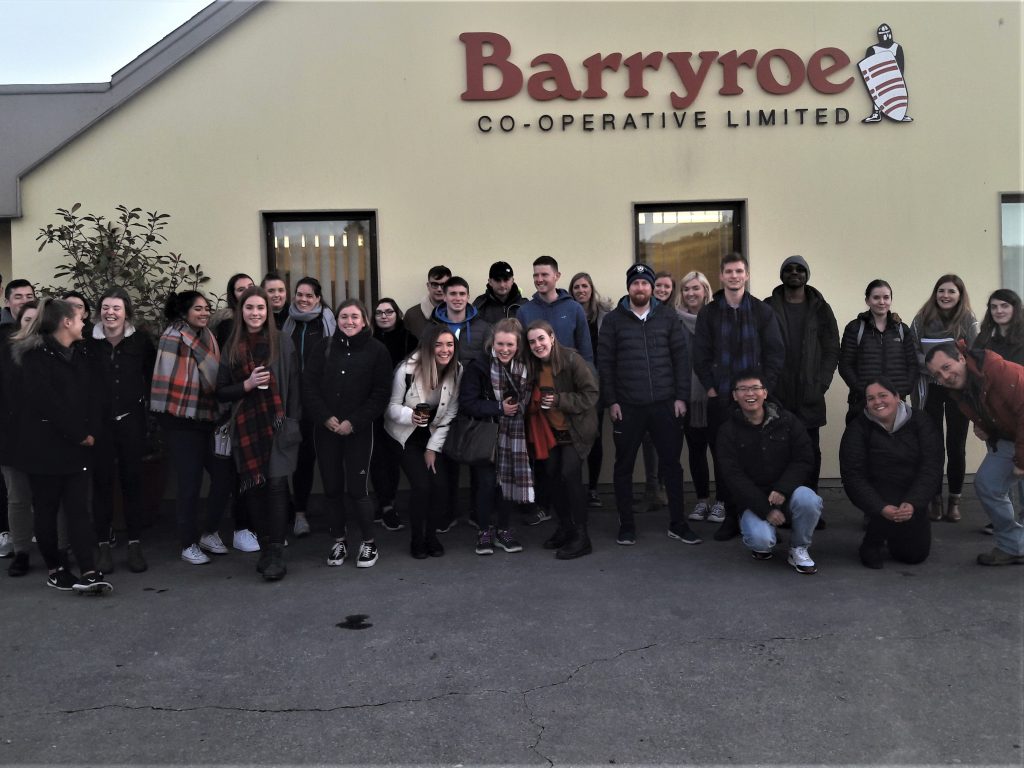
Then there is the co-op movement of Quebec – are you starting to notice a pattern? Ireland, the Basque country, Catalonia, Quebec – yes the common thread is separatist movements. These are places where people were or are trying to disinvest in the state and re-invest into their own socio-economic and cultural spheres.
Emilia Romagna in its own way is also part of a separatist northern Italian movement – and the point is not whether these movements, especially in Italy and Spain – are actually correct or not. The point is they are regions where a critical mass of people want to disinvest in the overarching state they don’t feel connected to. In this context, its very interesting to note that about 40% of the Italian’s region’s economy now comes from co-ops working with co-ops.
Rural Space, Depopulation, and Agroecological Farming.
There is another consideration too: rural Europe is depopulated. Germany is already seeing socio-economic benefits – despite the media hype – from the million refugees who arrived there. In Spain, there are brilliant social and solidarity economy programmes where very low population rural regions have their needs assessed, while migrants have their skills assessed and upgraded, and the two are matched up. Canada has seen great success in their Community Sponsorship resettlement programme, with 200,000 people settled since 1978. Other countries are (slowly) learning from this community driven approach.
Rural Dialogues | Best Immigration Practice can help Alleviate Rural Depopulation
We will need to make the best use of all people and places in the adjustments that will come when just-in-time delivery system collapse because there will be millions more people on the move, cities will creek and rural spaces will need to take up the slack. Ideally, this will be with clustered and mobile products and services for digitally connected villages, as the smart villages initiatives tries to foster.
Rural Dialogues | Smart Villages – Turning Momentum into Support for Local Action
The role of agroecology
To get to grips with how land could be used better, let’s start with the UN FAO definition of agroecology:
“Agroecology is a scientific discipline, a set of practices and a social movement. As a science, it studies how different components of the agroecosystem interact. As a set of practices, it seeks sustainable farming systems that optimize and stabilize yields. As a social movement, it pursues multifunctional roles for agriculture, promotes social justice, nurtures identity and culture, and strengthens the economic viability of rural areas. Family farmers are the people who hold the tools for practising Agroecology. They are the real keepers of the knowledge and wisdom needed for this agenda. Therefore, family farmers around the world are the keys elements for producing food in an agroecological way.”
For more, see our briefing notes on agroecology:
And where does organic and agroecological farming fit in in all of this? Agroecology is eminently more resilient and less fossil fuel-dependent than what’s practiced now. There are dozens of articles on this website about this – see our agroecology section. See also this new report from the (very urban and not especially rural or agricultural) UK that states: “we are persuaded that the principles of agroecology best sum up how farming will need to change globally”.
UK | RSA Report finds ‘Our Future in the Land’ should be Agroecological
Agroecology is less fossil fuel dependent (especially re fertilizers); more knowledge and labour intensive, more adapted to extreme weather shocks, better at building soil organic matter, and far better for biodiversity, above and below ground (see here from IFOAM EU for more). Agroecological approaches are also more attractive to young and women farmers (see also here and here), and can feed even industrialized regions like western Europe. In short agroecology is how we can conceivably produce food in the context of climate breakdown and biodiversity loss.
It one of the ways we’ll end up, in some capacity, moving back to the land in a context of climate and biodiversity breakdown.
To conclude, much is made of anti-capitalism and of system change, but how do we manifest something that works as an actual alternative to our current economic system? We need to add some substance to real alternatives. For now, the best option, the show in town as it were, is the social and solidarity economy. This is the thing that our energies, our resources should be invested in.
What’s Farming got to do with the 1m Species Threatened with Extinction? 10 Key reads



